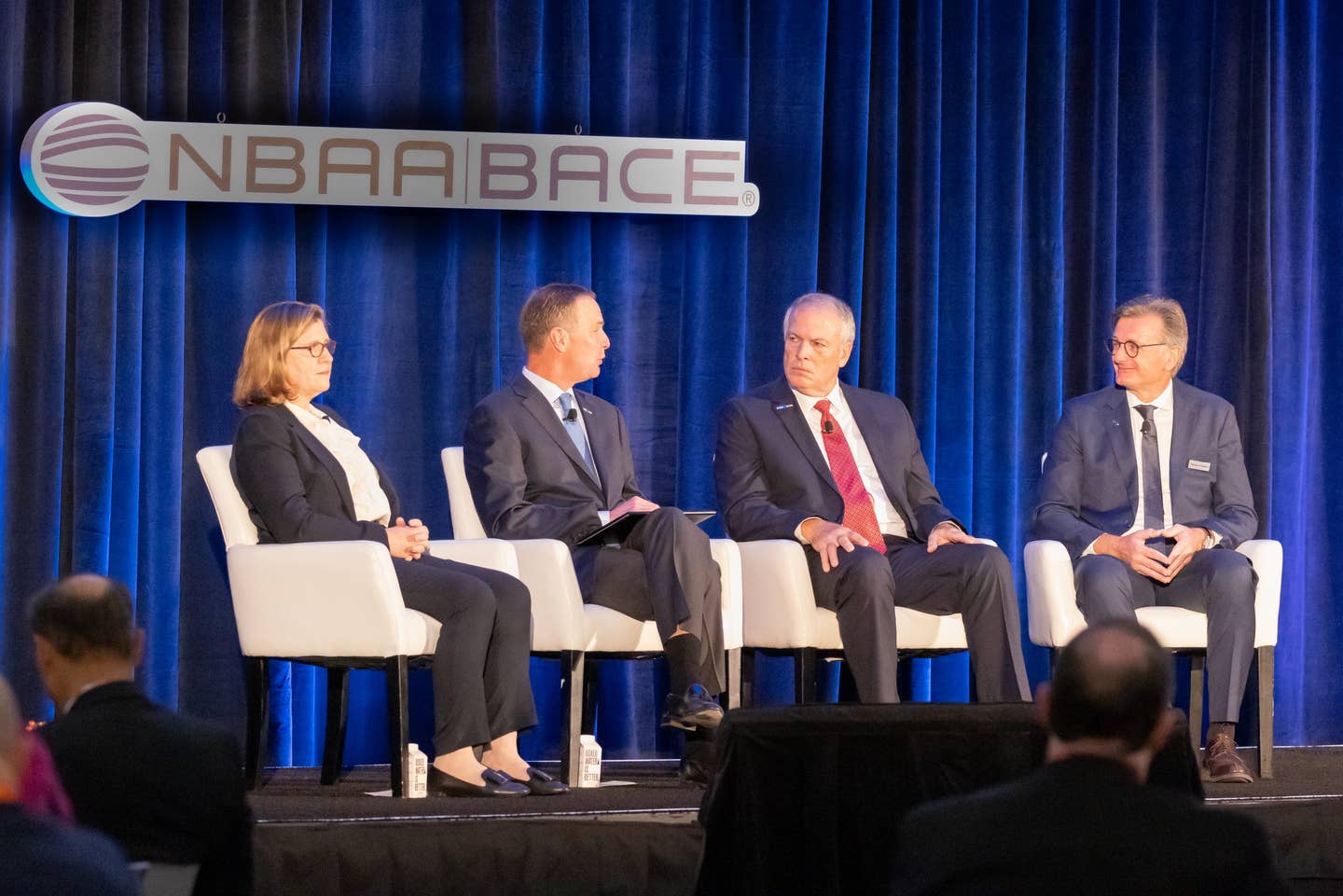
A panel moderated by NBAA Chair Elizabeth Dornak—including Ed Bolen of NBAA, Pete Bunce of GAMA, and Nicholas Chabbert, of Daher—gathered to support the new commitment to business aviation’s sustainable future. Stephen Boatman Yeates
Leaders from across the business aviation community came together this week at the National Business Aviation Association Business Aviation Convention and Exhibition (NBAA-BACE) in Las Vegas, Nevada—and went away pledging to an industry-wide commitment to net-zero carbon by 2050.
Ed Bolen, president and CEO of NBAA, Pete Bunce, president and CEO of the General Aviation Manufacturers Association, joined International Business Aviation Council director general Kurt Edwards in building on the 2009 Business Aviation Commitment on Climate Change goals, which included:
- Reducing carbon emissions 50 percent by 2050,
- Increasing fuel efficiency 2 percent per year from 2010 to 2020
- Achieving carbon-neutral growth by 2020.
The updated goal? To drive toward net-zero carbon emissions by 2050. The groups also plan to sustain the fuel efficiency increases by 2 percent each year from 2020 to 2030.
“I’m incredibly proud to say that the industry is on track to meet or exceed those goals,” Bolen said at a media breakfast launching the first full day of the convention. “This is a testament to the value of a unified partnership among operators, manufacturers, fuelers, service providers and many others.
“With our collective focus and determination, we can achieve carbon-neutrality in our lifetimes.”
Bunce looks to advancing technology to help support achieving those goals.
“As higher blends of SAF [Sustainable Aviation Fuel] become approved for production, we will be able to further optimize fuel efficiency through technological advancements to achieve our environmental goals,” Bunce said. “Our industry also has a proven track record of capitalizing upon innovations in the air traffic control infrastructure to further reduce emissions.
“Additionally, dramatic improvements in avionics and data communications capabilities will increase operational contributions to reducing emissions,” Bunce continued. “When merged with the exciting new designs employing electric distributed propulsion, hydrogen and SAF hybrid aircraft, we are confident innovation will keep us marching toward our net-zero goals.”
Edwards concurred. “SAF and initiatives like carbon-offsets will continue to be a key piece of the puzzle in carbon-emissions reduction.”

Sign-up for newsletters & special offers!
Get the latest FLYING stories & special offers delivered directly to your inbox






